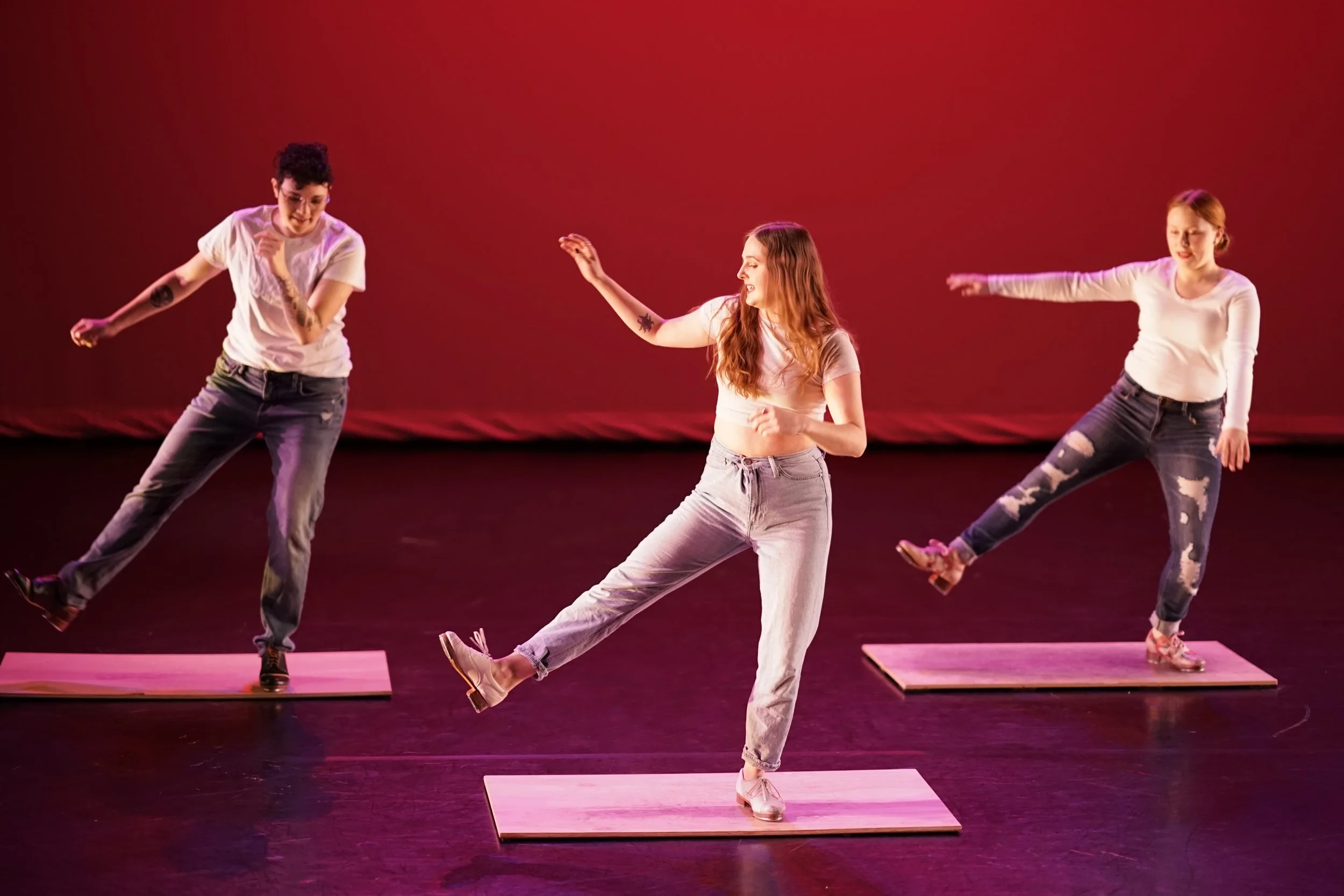The Ultimate DIY Tap Board Guide
How to Build the Perfect Travel Tap Dance Surface
For traveling tap dancers, having a reliable tap board is essential since many venues aren’t tap-shoe friendly. However, finding the right balance between portability, sound quality, and joint support can be a challenge. Carrying around a heavy, poorly cushioned board can quickly become exhausting.
After testing multiple designs, I’ve developed recommendations for those looking to create their own DIY tap boards. My name is Amber Andrews, and I’m a professional tap dancer with Rocky Mountain Rhythm. As a designer and artist, I was excited to take on the challenge of crafting the best tap boards for our company. Keep reading to see the designs I tested and learn how you can build the perfect tap board for your needs!
Tap Board Design #1: The Raised Board
The first boards I built were designed for my students competing in tap dance competitions. My goal was to create a platform large enough for movement while also enhancing sound so judges could properly evaluate their tapping, not just the visual performance.
Build Details:
Materials: Leftover plywood, 2x4 wood pieces
Structure: Raised platform with 2x4s arranged in a grid underneath
Enhancements: Holes drilled into the 2x4s to improve sound and reduce weight
Size: 4ft x 4ft
Pros: Excellent sound amplification, spacious dance area
Cons: Heavy and difficult to transport (even with a carved handle)
While these boards provided a great sound and performance space, their size made them awkward to carry and transport.
photo credit: Andrews Artistry
Tap Board Design #2: Large, Lightweight & Modular
My next iteration aimed to improve portability while allowing multiple boards to connect for larger performances.
Build Details:
Materials: MDF board (less prone to splintering than plywood), exercise mats for cushioning
Structure: Industrial-strength Velcro strips attached to connect multiple boards
Configurations: Can be linked in a row of six or in three rows of three
Pros: Lighter than the previous design, adaptable for different performance spaces
Cons: Still challenging to transport due to overall size; doesn’t fit in all vehicles
These were more versatile but still not ideal for dancers needing easy portability.
photo credit: Ian McMorran
Tap Board Design #3: The Ultimate Portable Tap Board (Our Current Model!)
After multiple tests, I landed on a design that combines durability, portability, and joint support—the tap boards we still use today!
Build Details:
Materials: Sprung floorboards donated by a local studio owner (Thank you, Elevate Dance Center)
Structure: Cushioned underside for joint support
Surface: Timestep Flooring, cut to fit for a superior tap sound
Size: 2ft x 2ft squares, wood-glued together for a wider surface
Transport Solution: Guitar strap and bolts added to the back for easy carrying
Customization: Tongue-and-groove joints allow multiple boards to connect with a mallet, creating a larger stage when needed
Pros: Comfortable for dancers’ joints, durable, and easily transportable
Cons: Slightly more complex build, but worth it!
This final design provides a professional-grade tap surface while remaining lightweight and easy to carry—perfect for traveling tap dancers!
photo credit: Andrews Artistry
Key Takeaways for Your DIY Tap Board
✅ Consider weight and size – Ensure your board fits in your vehicle and is manageable to carry.
✅ Protect your joints – Add cushioning or an elevated platform with some flexibility.
✅ Think about transport – Will you need a handle, strap, or cart? Plan ahead.
✅ Decide on modularity – Will you connect multiple boards for a larger stage, or is it just for individual use?
Show Us Your DIY Tap Board!
We love seeing how other tap dancers create their own boards! Share your DIY tap board photos and process with us—we’d love to continue improving designs together. Tag us on social media or email us your setup!
Happy tapping!
photo credit Gretchen LaBorwit




